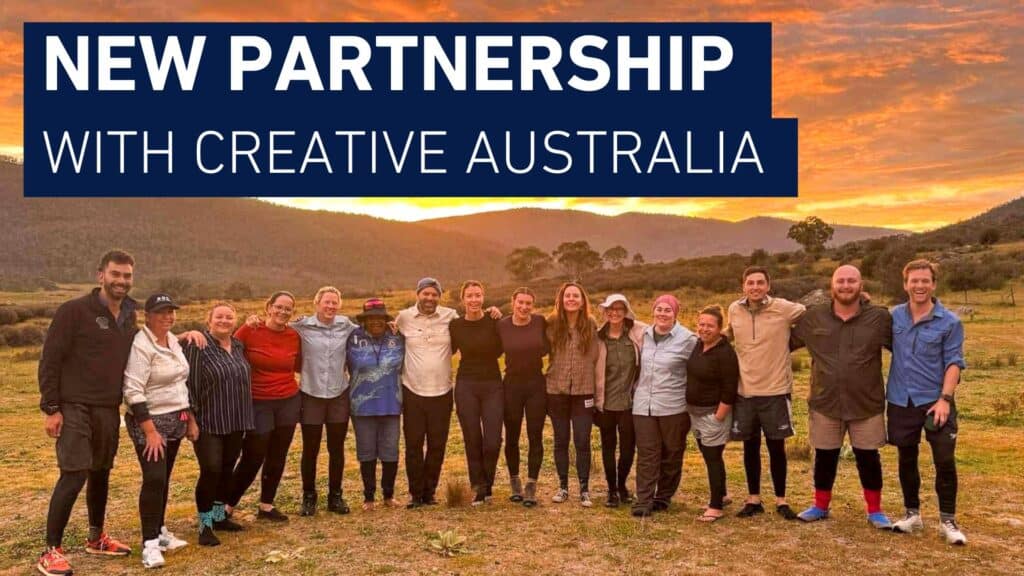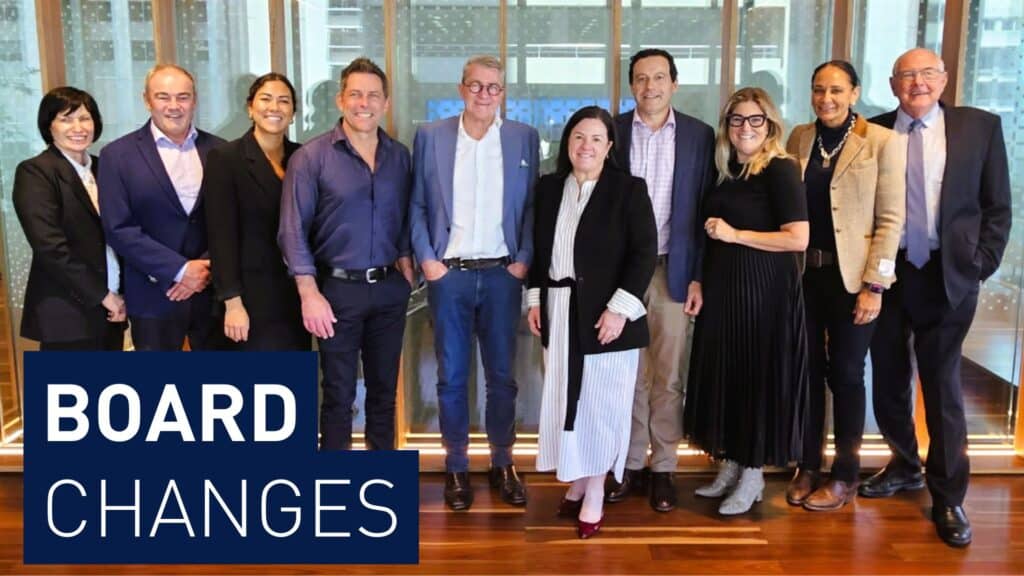Written by Dr Werner Vogels | Manager Impact and Reporting
The spirit of connection began even before SIITR25 officially started. Now in its third year, the conference was hosted in Grafton, NSW—a town best known for its annual Jacaranda Festival.
On “day zero,” the local brew house, still days from its official launch, opened its doors for a social impact showcase. Local organisations shared stories of their work and the difference it is making across the region. The afternoon flowed into a short tour, supper and drinks, with conversations already sparking new collaborations.
In the evening, a bus arrived carrying delegates who had travelled long hours, nine from Sydney, eleven from Wollongong, to be part of the gathering in Grafton. After so many hours together, connections had already formed on the road. The night ended with shared dinner at a local establishment, setting the tone for the days to come.
Grounded in Country
At the local Bowls Club, overlooking the river, we were Welcomed to Gumbaynggirr Country by Mark Daley, who played guitar and sang of his connection to the Boorimbah river. It was a powerful moment, anchoring us in place and reminding us that this conference was different. Here, connection is central. Participants are invited not only to listen but to reflect, ask critical questions, and spark conversations.
It was inspiring to see so many young people in the room. On the second night, some took part in the National Pitchfest at the local Cathedral, sharing ideas, garnering support, and seeking seed funding for the next stage of their ventures. Social change was the ultimate winner. Of the five pitches, two stood out. Carol Mudford (shedway.org.au) spoke powerfully about suicide prevention and mental health in farming communities—using shearing sheds as places for real conversations. And Jameson Harvey, founder of Red Dirt Robotics (reddirtrobotics.com.au), took out first prize. His vision? A gap-year program where young people travel across Australia delivering workshops on technology and STEM, inspiring the next generation of engineers.
Changing the narrative
On the morning of day one, one theme resonated strongly: consultation fatigue. Communities are tired of being asked for feedback that never changes anything. Panelists argued that trust is built not through consultation but through power-sharing. The pandemic proved this is possible. When Aboriginal health organisations were trusted to lead, outcomes improved dramatically. Communities never lacked capacity, they lacked recognition. As one participant put it: “we give voice to the art of human alchemy for generating change”.
It’s not only communities that need “capacity building” though. Institutions, agencies and funders must also shift. This includes changing how they work, how they measure, and how they share power. The language needs to shift from capacity building to capacity recognition.
Day one underscored another critical shift: the need to change the narrative about regional communities. Too often, the old deficit model frames them as lacking, in need of “fixing.” What emerged at SIITR25 was a different view—communities already hold resilience and assets. It is systems that often undermine their strength and autonomy.
Highlights and inspiration
What can we, as a Foundation, take from this? That we are on the right path. We deliver programs for collectives (industry, including their own systems) and in communities, where it matters most. Participants gain confidence in their leadership, or changemaking, abilities. With open heart, open mind, and open will, communities are empowered to create and sustain the change they want. They form networks of like-hearted individuals who may not always agree but can use the tools we provide. Listening to transform, inviting diverse perspectives, and identifying voices that are missing, and to work through difference.
As I wrote in my abstract for the conference, language matters. The words we choose can activate change, one conversation at a time. The Theory U framework by Otto Scharmer (listening to transform, letting go and letting come) offers a powerful way to understand how change unfolds. It’s also why our work connects people across sectors, alumni, stakeholders and funders. We slow down, we create space for experimentation, we hold space for difficult conversations and invite diverse voices in. That’s how people are invited to activate leadership and take bold action.
Dr Kim Houghton challenges us during a panel, stating: “Sameness does not equal fairness. Uniformity does not equal equity. If you want your program to be place-based, show me how it varies from place to place.” Me? I couldn’t agree more. It’s why I love the work we do.
In my workshop Leading in the Regions, I spoke to exactly this. Through the Australian Government’s Future Drought Fund, we have delivered changemaker workshops in over 120 LGAs to more than 2,000 people. These workshops unearth opportunities, give participants tools to build support, craft resonant messages, and test small-scale projects. Each conversation ripples out, one step at a time.
What stood out?
SIITR25 felt different. The conference celebrated community at its heart. One simple example, Why Leave Town (whyleavetown.com) gave every delegate a prepaid card to spend locally, ensuring the event’s impact flowed straight into the host community. Add to that the energy of young people leading in the social impact space, and the feeling was unmistakable: hopeful, grounded, alive.
And of course, there was everything that makes a great gathering memorable: music, a conference dinner, dress-ups, laughter, and plenty of yarns.
Looking ahead
As SIITR25 closed, the challenge put to us all was simple: keep weaving networks and holding space for hopeful action. Communities already hold the answers. They just need recognition, resources, and each other to bring them to life.
The real test will come when the rubber hits the road—when connection and collaboration take shape and translate into tangible social outcomes. We’ve seen the ripple effects for community and local organisations in Coffs Harbour (2023), and Kempsey (2024). Connections and networks create the optimal environment for growing social impact. Each gathering leaves behind more than conversations. It leaves a stronger web of relationships and momentum for change.
Because social impact requires working together, challenging systems, and empowering communities to shape their own destiny. It’s about building a collective—where many streams form one powerful river of change.
And as Mark Daley reminded us by the Boorimbah river, every journey begins with connection to place.





